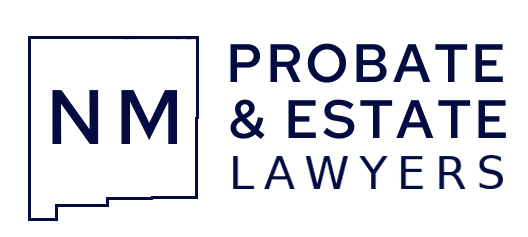Probate Inventory & Accounting
One of the biggest responsibilities of the personal representative is to prepare an “inventory” of the estate. An inventory simply means a list of all of the assets of the decedent and their estimated values. Ultimately, the inventory will help the personal representative determine how the estate’s bills are paid and how the assets should be distributed. In New Mexico, the personal representative has three months from when he or she is appointed to prepare an inventory.

What types of assets are included in a probate inventory?
By law, an inventory in New Mexico must include the “property owned by the decedent at the time of his death, listing it with reasonable detail and indicating as to each listed item its estimated value as of the date of the decedent’s death and the type and amount of any encumbrance that may exist with reference to any item.”
More complicated estates might include ownership interests in businesses, intellectual property, debt owed to the decedent, or lawsuits that have been or could be brought in the decedent’s name (such as a wrongful death lawsuit). If it is an asset, it belongs in the inventory.
The inventory also contains information about the decedent’s liabilities. Typical examples might include loans, credit card bills, mortgages, or taxes.
Types of property commonly found in a typical estate:
- Real property (homes, land)
- Vehicles (cars, RVs, motorcycles, boats, planes, etc.)
- Bank Accounts (checking, savings, safe deposit box contents)
- Investment Accounts (stocks, bonds, CDs, cryptocurrency)
- Retirement Accounts
- Personal property (jewelry, firearms, furniture, tools, collectibles, etc.)
- Insurance policies
- Unpaid wages (salaries, commissions, stock options)
How to Prepare Estate Inventory
There is no single way to prepare an inventory in a New Mexico probate proceeding. The inventory simply must comply with the law’s requirement to list all of the assets, their values, and any debts associated with them. Preparing an inventory consists of the following steps:
1
Find All of the Assets
Identifying estate assets can be a daunting task. Often, the decedent will not have left a roadmap to their assets. Finding them can require a bit of detective work.
One obvious place to start your search is the decedent’s paper records. Start with the estate planning documents—is there a list of accounts? If there is not, begin looking for things like account statements, deeds, titles, tax returns, or receipts. These are often found in file cabinets, desk drawers, or safe deposit boxes.
Of course, these days many people choose to store everything electronically. You will likely need to look through the decedent’s computer records the same way you looked through the paper records. If there is a password list, it may point you to important accounts.
Personal property is much simpler to find.
2
Gather Details of the Assets
To create an inventory, you will need to identify each asset. During your investigation, collect details such as account numbers, VIN numbers, or descriptions so that you can distinguish between different assets.
You must also value each asset. Some assets, such as financial accounts, are easy to value. Others, such as property, can be harder. If you need to have property appraised, include the contact information of the appraiser in your inventory—it is required by New Mexico probate law.
The inventory must also include any “encumbrances” on each asset. This essentially means loans that are associated with the asset. For example, the estate might include a truck with a car loan, or a house that has a mortgage. You will need to include the amounts of the loan in addition to the value of the assets in your inventory.
3
Fill Out the Inventory
The last step is the easiest: you must fill out an inventory. New Mexico does not provide a form, and you can do this however makes sense to you. Many people will choose to organize the inventory by type of asset. We have forms tailored to different types of estate that can help make this process easy for our clients.
What does a personal representative do with the inventory?
The initial inventory must be completed within three months of your appointment as a personal representative. Once it is ready, it must be sent to certain “interested persons” if they request it. New Mexico probate law defines interested persons as “ heirs, devisees, children, spouses, creditors, beneficiaries and any others having a property right in or claim against a trust estate or the estate of a decedent.”
You do not need to file the inventory with the court. If you would like the docket to show that you prepared an inventory, you may choose to file a notice of completion into your case. If additional information about the estate assets comes to light later, don’t worry: you can prepare a supplemental inventory.
The New Mexico probate process can be challenging, especially in your time of grief. You don’t have to go through it alone. Our probate attorneys and staff can guide you through this complicated process. If you’d like some assistance, please contact us to schedule a free consultation.
Affordable Fees
Simple uncontested probate administration starting at $2,999*
*plus tax and expenses
